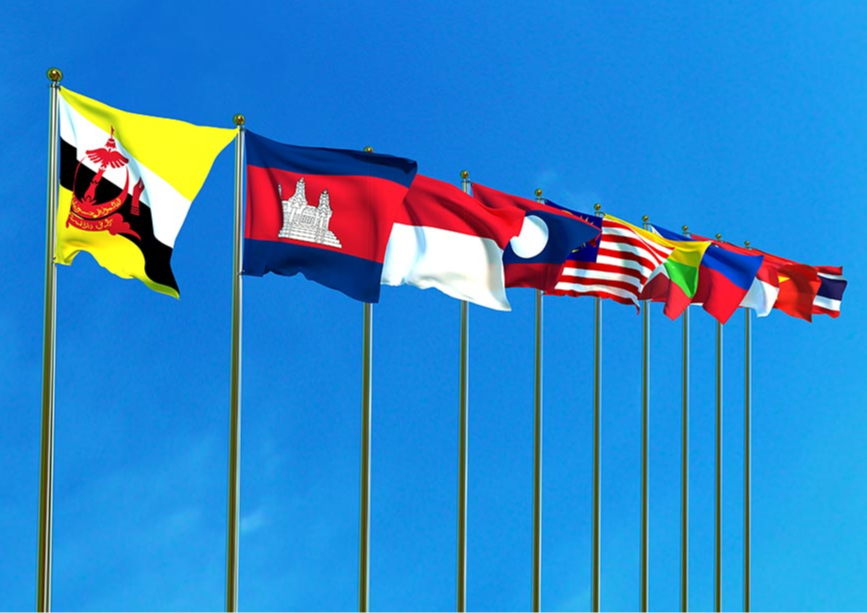
This article is part of the series—Raisina Edit 2024
The rise of the Indo-Pacific construct is coupled with the intensification of power competitions on the one hand and increasing levels of economic connectivity on the other. Such tumultuous dynamics have compelled middle and small powers of the region to strive harder to gain more agency and political autonomy. Among the regional players, the Association of Southeast Asian Nations (ASEAN) is at the heart of this strategic dilemma.
The primary catalyst for ASEAN’s creation in 1967 was not integration, but rather ensuring the survival and resilience of its members amidst the exacerbating power dynamics of the Cold War and the spread of communism throughout Southeast Asia. However, with the dissolution of the erstwhile Soviet Union and the expansion of membership within ASEAN, the turn of the century witnessed how the bloc sought to leverage its experience in community-building to serve as an institutional anchor throughout Asia by promoting ASEAN-centric norms of consensus decision-making, informal diplomacy, non-interference, respect for sovereignty, and the preservation of the bloc’s centrality. Thus, the expansion of ASEAN-led mechanisms and the growing adherence of major powers towards the Treaty of Amity and Cooperation (TAC) provided a much-needed structure for countries with diverse interests to cooperate at a time when distrust was prevalent among emerging powers.
The primary catalyst for ASEAN’s creation in 1967 was not integration, but rather ensuring the survival and resilience of its members amidst the exacerbating power dynamics of the Cold War and the spread of communism throughout Southeast Asia.
Escalating Chinese assertiveness: Navigating geopolitical challenges
Of late, the foundation of these ASEAN-led mechanisms has come under strain due to the competitive nature of contemporary Indo-Pacific geopolitics. While several structural factors encompass Indo-Pacific security, the unfolding power competition between the United States (US) and China has the most immediate impact on ASEAN member countries. Southeast Asia is geographically located at the intersection of the traditional sphere of US influence and the emerging locus of Chinese power. Since 2008, China has been increasing its provocations against the security architecture of Southeast Asia through its expansionist interests in the South China Sea. It continues to assertively alter the balance of power and geography of the disputed maritime territory to its favour, at the expense of the sovereignty and sovereign rights of its less powerful neighbours, thus directly challenging the stability of the rules-based order in the Indo-Pacific. This has inevitably catalysed a US response to check Beijing's growing belligerence and expansionist regional interests. Along with this response is the proliferation of security arrangements amongst like-minded democracies, such as the Quad and the AUKUS—Australia, the United Kingdom (UK), and the US trilateral—to preserve and secure the established regional order. However, this has resulted in a more acute focus on Southeast Asia, making it a hotspot for a potential shooting war within the greater Indo-Pacific.
This creates two problems for ASEAN. First, the preservation of autonomy and sovereignty amidst external power fluctuations is at the heart of ASEAN's external outlook. Amidst a highly competitive strategic environment brought about by the exacerbating US-China power competition in Southeast Asia, ASEAN countries face a growing challenge when it comes to pursuing their economic and security interests while also ensuring their survival and political autonomy. It is also important to note how ASEAN comprises dynamic countries with varied threat perceptions, interests, and sensitivities, resulting in varied reactions to the unfolding power competition. While the presence of the US as a potential balance to Chinese dominance in the region is welcomed, the majority of Southeast Asian countries remain cautious of aligning too deeply with Washington given their wariness of the US’s “value-based” foreign policy, its historic inconsistency as a security provider, and the perils of the US being geographically distant.
Southeast Asia is geographically located at the intersection of the traditional sphere of US influence and the emerging locus of Chinese power.
Moreover, while Washington's military pre-eminence in the region is undeniable, China has been able to deepen its influence through its growing economic activities in Southeast Asia. Since 2009, China has cemented its role as ASEAN’s top trading partner. Moreover, Beijing is Cambodia and Laos's leading source of development assistance, while Indonesia is Southeast Asia’s largest beneficiary of the Belt and Road Initiative (BRI). Furthermore, since the 2021 coup in Myanmar, China has been taking advantage of the domestic unrest in the Southeast Asian country to further its interests and strengthen its influence given the former's geostrategic relevance in the region.
Therefore, while Beijing presents a challenge to the stability of Southeast Asia, ASEAN countries refrain from overtly taking sides against it to avoid having their actions misconstrued in a way that resembles bloc politics, which can have several consequences given China's advantageous geographical proximity and its notorious record of using economic coercion and the conducting of grey-zone activities in the South China Sea. Even for countries like Vietnam and most recently the Philippines, which have been quite vocal about their opposition to Chinese unilateralism in the disputed maritime territory, prudent steps are still being taken by Hanoi and Manila in maintaining a defensive position vis-à-vis the US-China power competition.
Diminishing credibility of ASEAN: Challenges in regional leadership and unity
As ASEAN countries strive to maintain political autonomy and ensure survival amidst the intensifying US-China power competition, it would be vital for them to incorporate the strategy of denial more effectively, which entails preventing immediate great power/s from attaining monopoly over regional affairs by forging close ties with other major powers to act as a strategic buffer. This will require a serious foreign policy reorientation amongst Southeast Asian countries, by prioritising partner diversification and leveraging ties with emerging powers that identify themselves as independent forces rather than shadows of the US-China strategic competition in the Indo-Pacific. Accordingly, there are positive trends in this regard, such as the strengthened ties between Southeast Asian countries and other Indo-Pacific powers, such as India, France, and Japan in the realms of economic and defence cooperation.
The long-term success of ASEAN-led mechanisms in the Indo-Pacific is highly dependent on the bloc’s cohesion and the ability of its dialogue partners to foster a conducive environment for multilateral processes.
Second, as the polarisation of power continues to deepen in the Indo-Pacific, the resilience and effectiveness of ASEAN-led mechanisms have been questioned. Realising the risks of becoming marginalised in regional politics, ASEAN eventually adopted the ASEAN Outlook on the Indo-Pacific (AOIP) in 2019 to reemphasise the continued importance of ASEAN-led institutions in enhancing regional multilateralism and cooperation. However, while incorporating the Indo-Pacific into ASEAN’s strategic lexicon was a step in the right direction for the bloc, its difficulty in operationalising the AOIP on the ground serves as a more significant impediment. The long-term success of ASEAN-led mechanisms in the Indo-Pacific is highly dependent on the bloc’s cohesion and the ability of its dialogue partners to foster a conducive environment for multilateral processes.
While institutions such as the ASEAN Regional Forum (ARF) and the East Asia Summit (EAS) remain relevant avenues for cooperation in contemporary Indo-Pacific affairs, the polarising dynamics of power in the region makes it difficult to rule out possible credibility issues that such ASEAN-led mechanisms may face in the long term. This is mainly due to ASEAN's internal constraints, which hinder it from forging a unified position on crucial regional security issues, particularly in Myanmar and the South China Sea. While this is not new, given the diverse interests of its members, the stakes are much higher today for ASEAN to keep all major powers engaged to maintain their influence in the region.
The long-term success of ASEAN-led mechanisms in the Indo-Pacific is highly dependent on the bloc’s cohesion and the ability of its dialogue partners to foster a conducive environment for multilateral processes.
Therefore, while ASEAN is an essential player in Indo-Pacific affairs, its influence over the emerging security shifts in the region is being questioned due to the bloc's growing vulnerabilities to power politics and its members' need for more cohesion on several pressing issues. Therefore, to maintain its credibility at a time of significant geopolitical turbulence, ASEAN should consider structural and cultural reformation. At the same time, its members must pursue a more diversification-driven foreign policy to ensure greater strategic flexibility.
Don McLain Gill is a Philippines-based geopolitical analyst, author, and lecturer at the Department of International Studies, De La Salle University.
The views expressed above belong to the author(s). ORF research and analyses now available on Telegram! Click here to access our curated content — blogs, longforms and interviews.




 PREV
PREV



